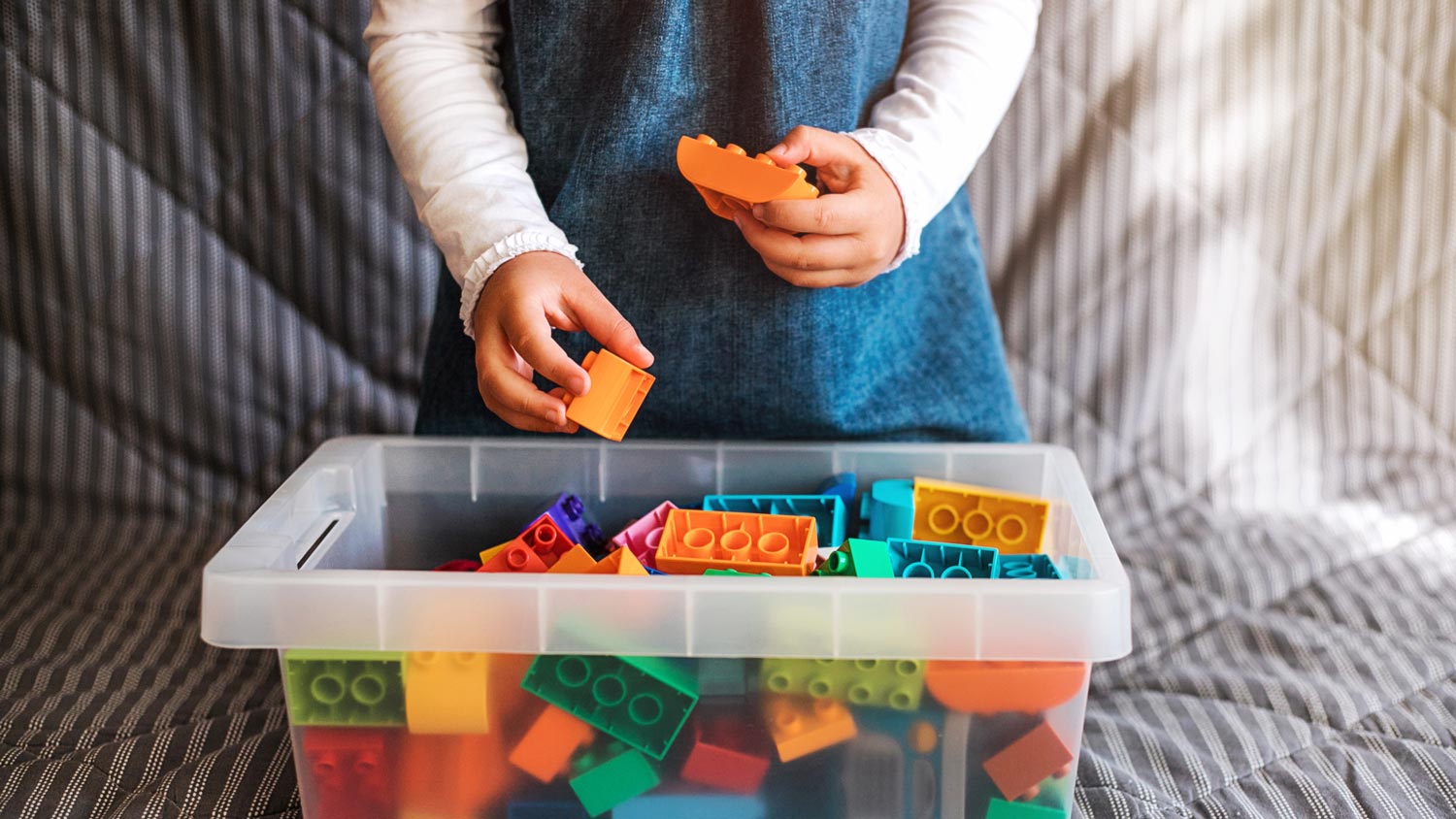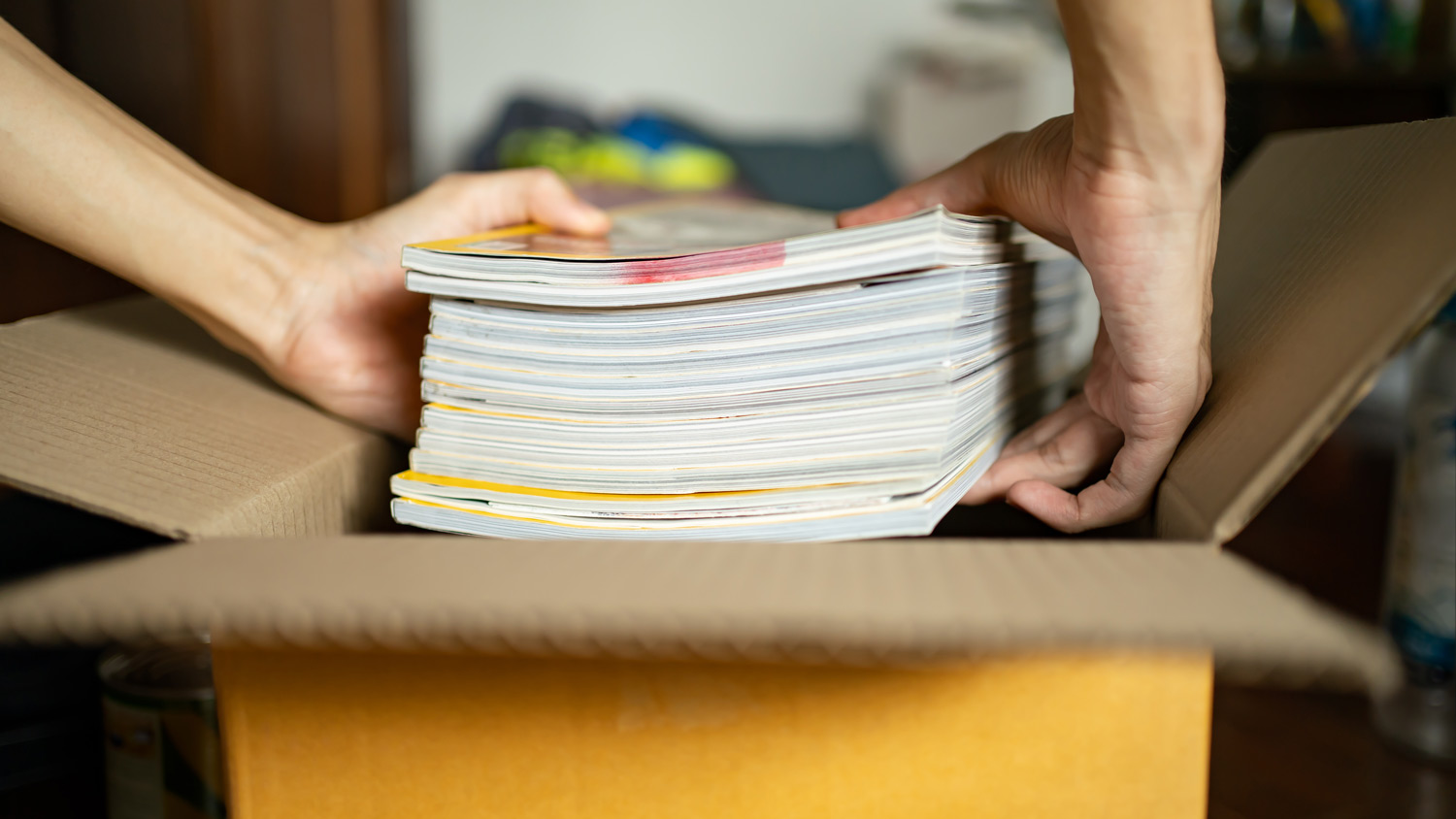How to Declutter a Small Space in 6 Quick Steps
Stop procrastinating and start decluttering your home to get organized


The phrase “get organized” may sit atop our to-do lists. Yet, day after day, that box goes unchecked as we postpone organizing our home. Meanwhile, clutter accumulates until we’re frustrated and overwhelmed. Resist the urge to give up and give in to clutter. With a few tips, you can organize any small space and create a hassle-free decluttering routine.
1. Pick a Small, Unsentimental Spot
If you’re overwhelmed about where to start, consider a small unsentimental space in a room. This space could be a cluttered corner of a walk-in closet or a dining table hidden beneath mountains of mail. Where to start depends on your house, your emotions, and your clutter.
To identify your starting point, look for a spot with zero emotional attachment. This could be your freezer, file cabinet, or that pile of tools in your garage. Being able to detach from the clutter makes it easier to organize.
2. Divide and Conquer Tasks

One reason people become frustrated with organizing a space is that they combine the task with house cleaning. Organizing and cleaning are two different tasks. Divide and conquer. Don’t get bogged down organizing if what you need to do is tidy up the space.
Set aside time to organize hours or a day or two after you’ve done basic cleaning, including picking up things off the floor and tabletops.
During your quick cleanup session, arrange like items in containers, such as milk crates for toys, plastic bins for papers, or laundry baskets for clothing. During cleanup, don’t spend a second thinking about where a piece of paper or toy will wind up. You’ll do that later when you’re ready to declutter and get organized.
Removing the pressure to organize during cleanup will alleviate stress and make the decluttering process more manageable. So now, instead of dreading a whole-house decluttering project, you’re looking at organizing one box, bin, or basket at a time.
3. Set Aside Time to Declutter
On declutter day, set aside a two- to three-hour block of time devoted to organizing. No matter which room you start in, you’ll have your baskets, boxes, and bins. Turn off the television. Put the phone on mute. This time is devoted to decluttering.
Even if you’re feeling major declutter mojo, try not to go over the three-hour mark. The goal is to incorporate decluttering into your home organization routine. Keep in mind that a lack ofa an organizational system is one of the top five clutter causes.
4. Form Three Piles: Keep, Toss, Donate

Grab one of those catch-all bins or baskets from the quick clean-up and sort items into one of three piles: keep, toss, or donate. Avoid the temptation to file as you go. Keeping tasks simple helps you focus and feel an immediate sense of accomplishment. In addition, being able to complete simple organizational tasks creates momentum.
Since you've started with an unsentimental area, your “keep” category should be small. A general rule to go by is if it’s been six months or more since you’ve used the item, toss it.
5. Put the “Keeps” Back
Subscribe to the “everything has its place” philosophy, and decide where that is for each item. Be mindful when it comes to reducing paper clutter. For example, if you have a hanging file labeled insurance and come across car insurance documents, make sure those papers land in a file folder marked “car insurance.” If you don’t have such a folder, create one. Or better yet, digitize your important documents, a great tip to reduce older items in your home.
After you’ve sorted through your keep items, admire your clean and clutter-free area. Sigh. Doesn't that feel great?
6. Donate, Toss, and Repeat
Keep garbage bags handy to throw away the “toss” pile and to transport items you wish to donate.
Now that you’ve organized a small space in your home, plan to declutter regularly. Similar to taking out the trash and doing laundry, decluttering can be incorporated into your home maintenance routine.
Consider developing a home decluttering checklist. After routinely repeating the declutter process, you should have no problem keeping your small space organized. If you’re not into decluttering things yourself, look into hiring a home organizer in your area.



- Home Decluttering Checklist: How to Get Organized in 5 Steps
- How to Declutter Your Home With These 11 Tips
- Storage ideas for every room in your house
- How to Choose the Right Pro to Declutter Your Home
- The Top 5 Causes of Clutter (And How to Prevent It)
- Benefits of Hiring a Professional Organizer to Declutter Your Home
- 8 Tips for Downsizing to a Smaller Home
- How to Organize Your Kitchen: 22 Tips to Maximize Efficiency
- The Definitive Guide to Clearing Out Older Items in Your Home
- Learn How to Clean Your House (and Maybe Even Have Fun Doing It) With These 27 Tips










